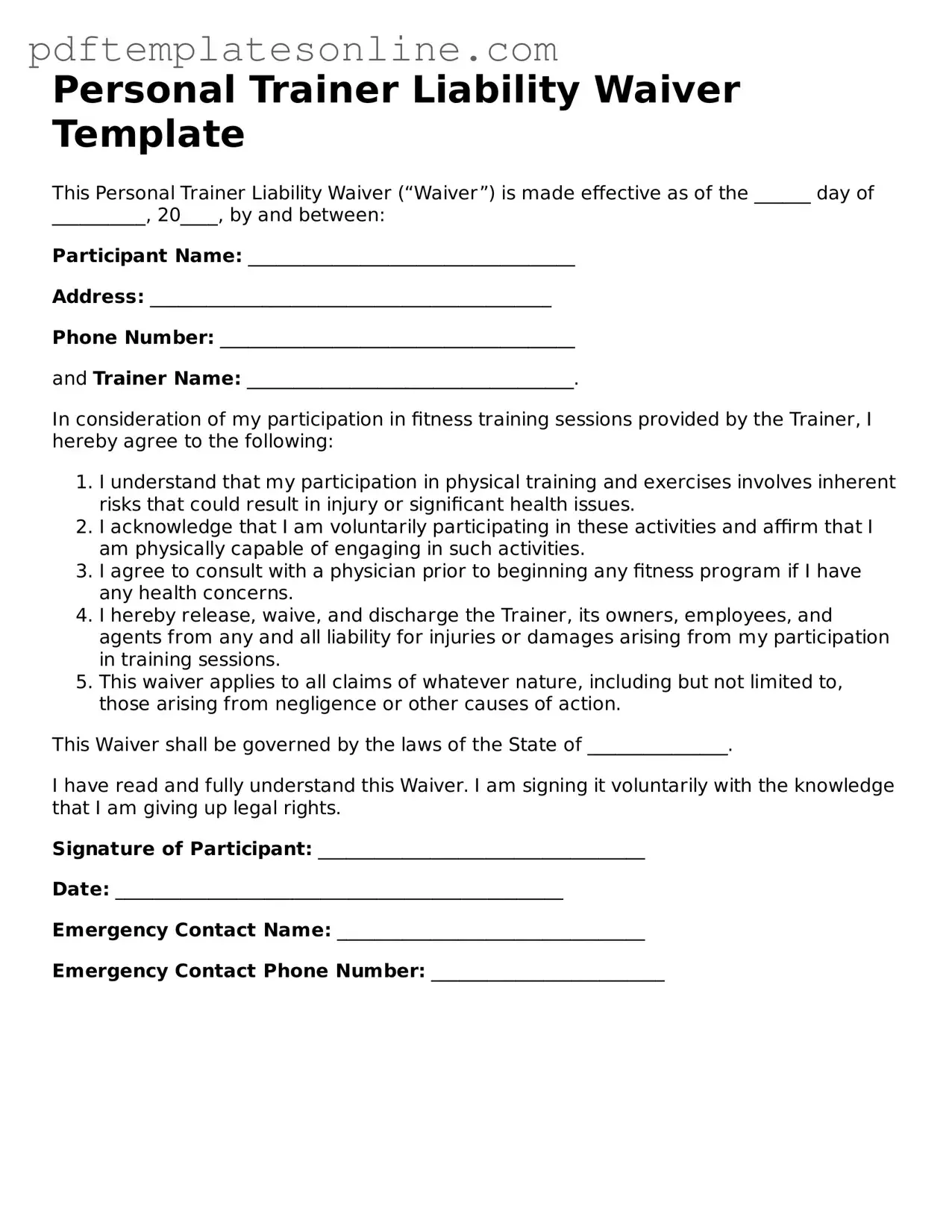Filling out a Personal Trainer Liability Waiver form is an important step for anyone engaging in fitness training. However, many individuals make common mistakes that can lead to confusion or issues later on. Understanding these mistakes can help ensure that the waiver is completed correctly.
One frequent error is not reading the entire form before signing. Many people rush through the process and overlook crucial details. This can result in misunderstandings about what they are agreeing to. Taking the time to read the waiver thoroughly can clarify responsibilities and rights.
Another mistake is failing to provide accurate personal information. This includes names, addresses, and emergency contact details. Inaccurate information can create complications in case of an emergency. It is essential to double-check all entries for accuracy.
Some individuals neglect to disclose relevant medical history. If someone has pre-existing conditions or injuries, it is vital to inform the trainer. Omitting this information may put the individual at risk and could lead to liability issues for the trainer.
People also often forget to date the form when signing. A missing date can raise questions about when the waiver was signed, potentially complicating matters if an incident occurs. Always ensure that the date is clearly indicated to avoid any confusion.
Lastly, many individuals do not ask questions if they are unsure about any part of the waiver. It is important to seek clarification on any terms or conditions that are confusing. Trainers and fitness facilities are there to help, and asking questions can lead to a better understanding of the waiver.
